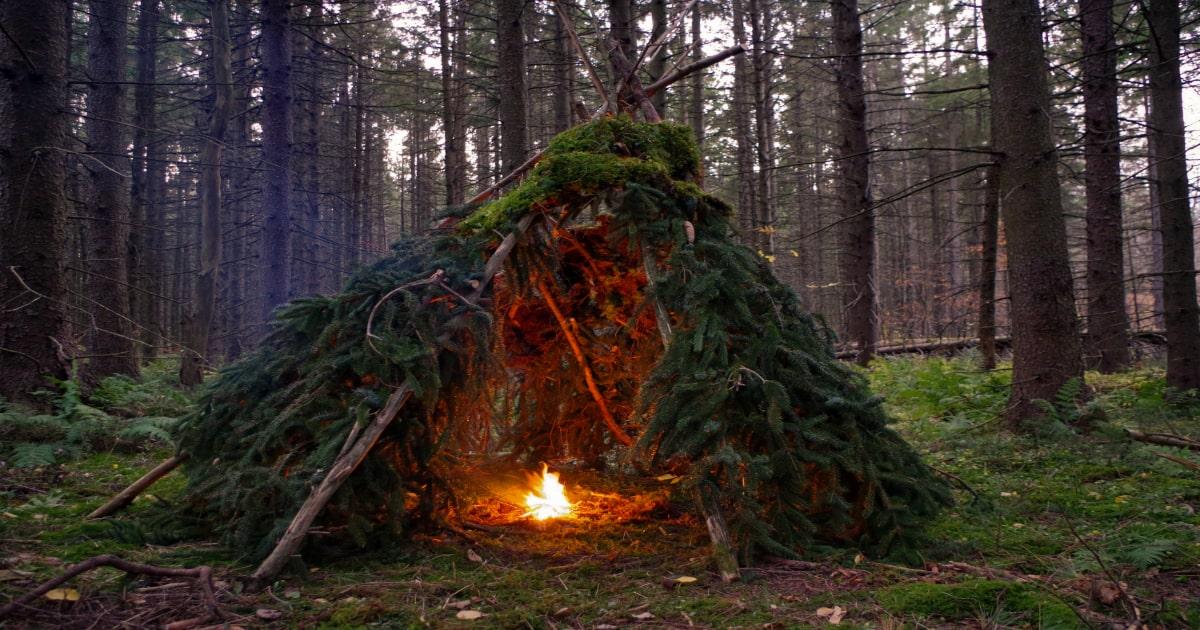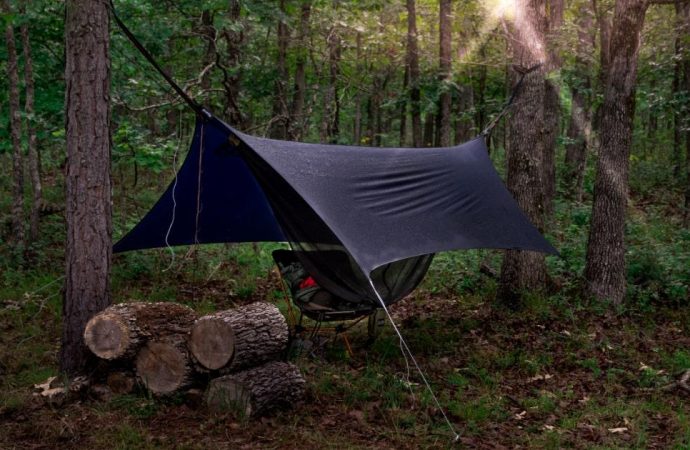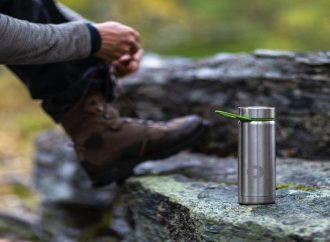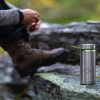As anyone who’s stepped foot onto these islands knows, the UK weather is infamously unpredictable. It rains almost constantly, and sometimes, even the best made shelters cannot withstand the harsh climates. In a survival situation, it’s essential you stay protected against the rain – and this goes much further than just your waterproof jacket and
As anyone who’s stepped foot onto these islands knows, the UK weather is infamously unpredictable. It rains almost constantly, and sometimes, even the best made shelters cannot withstand the harsh climates.
In a survival situation, it’s essential you stay protected against the rain – and this goes much further than just your waterproof jacket and trousers. Your shelter needs to be waterproof too, instead of just using sticks and moss.
Adding extra layers won’t always do the trick, as it’s dependent on the type of materials you use instead. Waterproofing your shelter isn’t merely a benefit, it’s an essential.
It isn’t just uncomfortable to stay in a wet location, but it can often lead to severe health risks including respiratory problems and hypothermia.
Here are a few useful tips, tricks and materials you can use to guarantee yourself a dry space. The benefits are endless, and with the right materials, you won’t ever have to worry about getting wet again when bugging out.
Choose The Right Environment
For those of you choosing to bug in, you probably have a man-made, waterproof roof above your head – count yourself lucky. But preppers who are surviving by bugging out will first need to choose the right place to set up camp.
This goes beyond the general location, like choice of county, although some simple geographical research tells you where not to settle. You need to look into more specific characteristics like ocean currents, winds, and altitudes.
Choosing the right solutions to these questions won’t waterproof your shelter by themselves, but they will make survival a lot easier, as you’ll be at much less risk and can focus on other aspects of your prepping.
Opt For Natural Shelter
Although the responsibility is entirely on you, there’s a number of choices you can make that’ll simplify the process, and increase the waterproof nature of your shelter. If you’re bugging out in a woodland, then use the environment around you to your advantage.
Treetops offer great coverage with their density, but you may also be able to find a cave or something similar for additional shielding.
Don’t place your shelter beneath a cliffside, or sloped piece of land like the bottom of a hill. This will act as a slide for water to land on your makeshift home. It’s especially important not to do this during winter, when you also have to fight against snow and the more extreme sides of the elements.
If you have built a shelter from sticks, then covering the exterior with rolls of moss will help move water down and away instead of through, and you’ll also get some camouflage from it too.

Use Tarp & Plastic Sheeting
Ask any survival expert, and they’ll tell you that tarp is arguably the most important thing you can carry in your emergency bag. It’s durable, strong, versatile and cheap – four characteristics that you should try and get from everything you’re carrying with you.
We recommend buying 3-metre by 3-metre sheet of waterproof tarp as a minimum. This ensures enough space to sleep on, to be used as a surface protector, and can also be draped above you to create a makeshift roof. You also need to consider the gsm ratings of tarps you’ll need to make your waterproof shelter.
You can hang a tarp from between trees to make a waterproof shelter quickly if you start to feel raindrops coming. Always place it at an angle for run off, or else water will pool on the roof and weigh down your structure.
Any shelter can be made waterproof more or less instantly with a tarp and some 550 paracord, so don’t neglect to have a few different ones in your preps.
Make It Permanant With Shingles
Shingles are about as ideal as it gets – a product specifically designed to prevent water from entering a property. And they’re incredibly easy to find when SHTF – maybe even easier than in the normal world.
Visit almost any home across the UK and you can pull them off yourself. They are heavy if not made from wood, so there’s some inconvenience and needs a strong structure to support them, but if you’re looking to assemble a permanent residence then you can’t do any better.
You’ll probably have a bit of a struggle taking them off their current building, but a screwdriver, knife or something similar will provide enough leverage. Just don’t forget to bring a rucksack with you to carry them.
The main issue will be stopping them from falling off your shelter’s roof, and tarpaulin won’t provide adequate stability – so you’ll need something like metal or plastic to form a solid foundation.
Invest In A Good Tent

A ready built waterproof shelter, you should always have a couple of 4 man tents in your bug out plan, as these will be much better solutions than having to try and source all of your materials and build something for yourself.
They can be assembled in minutes and will provide adequate protection from all the elements provided you pull the guy ropes tight so the rainwater just runs off it – unlike the one above!
Buy the best tent you can afford and ensure it’s a waterproof shelter. Opt for green, brown or camo you don’t want to stick out with bright blues and oranges when you’re trying to stay hidden. There are many kinds of ex-army tents available to buy too.
Always make sure the outer layer is pulled tight so water cannot penetrate inside the tent by touching the inner fabric, otherwise you’ll wake up in a puddle. If you can afford it, bring two or more as after a few months of being up it may start to show signs of wear from the elements and UV rays, and the other one can even store your belongings, leaving one for sleeping only.
Ensure You Have Enough Rope, Paracord Or Cordage
Due to its shape, tarp has a high risk of blowing away if not secured properly. You simply cannot afford to make mistakes like this, so bring some rope or thick paracord to tie it down.
Rope and paracord is strong, durable and has an endless number of uses, including securing down your waterproof shelter solution so always make sure you bring some.
If you have to punch holes in your tarp, bring some metal eyelets to prevent tearing, or just buy tarp with plastic or metal eyelets at the corners and edges.
Corrugated Roofing Is An Ideal Option
Similar to shingles, corrugated roofing is one of the roofing industry’s go-to materials when working on smaller outdoor building properties throughout the UK. It can be found in similar locations, so you’ll have to trespass if the roofing isn’t damaged or exposed.
Entering properties provides a higher risk of threat from other humans, but the results are worth it.
Corrugated roofing is easier to add to your shelter, and provides instant results. It’s also durable, and acts as an insulator – perfect for the colder months. We believe this is one of the most effective materials, and should be near the top of your list.
Where To Find Manmade Materials
Stumbling across manmade materials is a blessing – but you can also deliberately seek them out.
Areas like industrial parks and cities will have plenty to choose from. Whether you’re going for metal, plastic or a different material, it’ll serve you well, and probably better than any natural material.
One of the few downsides is that they’re often heavy, and impractical to carry – meaning once you’ve set up, you’ll have to prepare to leave your findings behind unless you plan on staying there long term.
Summary
In short, it’s absolutely essential that you have a waterproof shelter. Even in mild summer weather, there are risks of condensation that can make a huge difference to your overall health.
Proper waterproofing also prevents your possessions from being damaged, and as you don’t have much when SHTF, you have to stretch whatever you do.
Solutions fall into two categories – man-made and natural. Man-made materials are much more durable and effective, while the latter is a lot more attainable, and perfect for short-term solutions. Make the right choices and it’s a huge weight off your shoulders. You can even buy the gear beforehand or make your pre-determined bug out shelter waterproof.





















